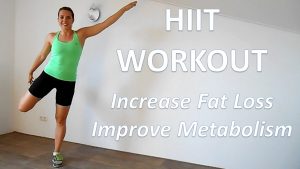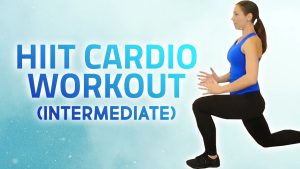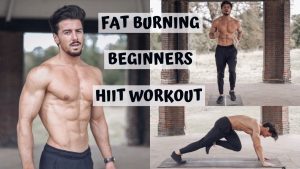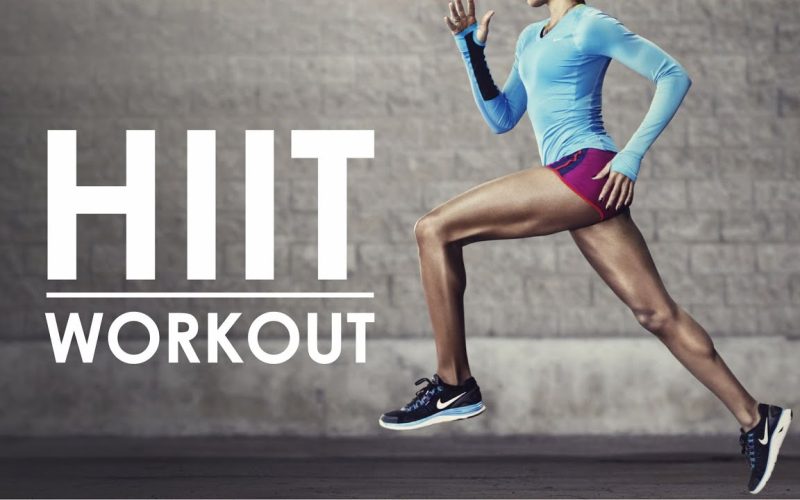Introduction
In 2025, fitness enthusiasts are looking for efficient ways to stay in shape without spending hours in the gym. One of the most popular workout methods today is HIIT (High-Intensity Interval Training). With its promise of fast results in a short amount of time, HIIT has become a go-to exercise choice for many.
But what makes HIIT workouts so effective? Why do they deliver such great results in a shorter time frame compared to traditional workouts? In this article, we’ll dive deep into the science behind HIIT and explain why this workout method is so effective for improving fitness, burning fat, and boosting overall health.
What is HIIT?
HIIT (High-Intensity Interval Training) is a form of exercise that alternates between short bursts of intense activity and brief periods of low-intensity recovery or rest. These short intervals of high effort followed by recovery periods are designed to keep your heart rate elevated, maximizing fat burning and calorie burning within a short time frame.
In simple terms, HIIT pushes your body to work as hard as it can for a short time, followed by a rest period. This cycle is repeated several times during a session, allowing you to get the benefits of a longer workout in a fraction of the time.
What’s exciting about HIIT is that it can be applied to many types of exercise, including running, cycling, strength training, and bodyweight exercises. The idea is to work at near-maximum effort during the high-intensity phase and rest or move at a slower pace during the recovery phase.
The Science Behind HIIT Workouts
1. Boosting Metabolism

One of the main reasons HIIT is so effective is its ability to boost metabolism. During the high-intensity bursts of exercise, your body burns more calories. But the benefits don’t stop when the workout ends. The body continues to burn calories at an elevated rate even after the workout is over. This is known as EPOC (Excess Post-Exercise Oxygen Consumption).
EPOC refers to the increased rate of oxygen consumption your body experiences after intense exercise. Essentially, after a HIIT workout, your body works harder to return to its resting state, which increases calorie burn for hours after you’ve finished exercising. This is why HIIT is so effective for fat loss—it continues to burn calories even when you’re done working out.
Tip: To get the most out of your HIIT sessions, try to incorporate 2-3 sessions a week into your routine for maximum fat-burning potential.
2. Improving Cardiovascular Health

HIIT is known for its cardiovascular benefits. When you alternate between intense bursts of exercise and recovery periods, your heart rate goes up and down. This challenges your heart to pump blood more efficiently and increases the overall health of your cardiovascular system.
Studies have shown that HIIT can improve heart health by increasing VO2 max, which is the maximum amount of oxygen your body can use during intense exercise. A higher VO2 max is associated with better aerobic endurance and improved performance in daily activities.
Unlike moderate-intensity steady-state cardio (like jogging for an hour), HIIT can achieve similar or even better cardiovascular benefits in less time.
Tip: If you’re looking to improve cardiovascular health, HIIT workouts that include exercises like cycling, sprinting, or jumping rope can help maximize heart health.
3. Fat Burning and Weight Loss

One of the main reasons people turn to HIIT workouts is for weight loss and fat burning. Because of the high-intensity bursts of effort, HIIT increases fat oxidation during and after the workout, leading to greater fat loss.
Unlike traditional steady-state cardio, which primarily burns fat during the activity, HIIT has the advantage of burning fat even after the workout has finished. This is due to the EPOC effect mentioned earlier, which keeps the metabolism elevated for hours after the workout.
Several studies have shown that HIIT can be more effective at reducing body fat than longer, moderate-intensity exercises like running. This makes HIIT a great choice for those looking to lose weight and reduce overall body fat percentage in a short amount of time.
Tip: Pair HIIT workouts with a balanced diet to maximize fat loss and achieve your weight loss goals more effectively.
4. Building Muscle and Strength

In addition to burning fat, HIIT workouts can also help build muscle and strength. The short, intense bursts of exercise often incorporate resistance training exercises, such as bodyweight movements (like squats, lunges, and push-ups) or strength training exercises (like kettlebell swings or dumbbell exercises).
Because HIIT includes strength training components, it helps improve muscle endurance and tone while promoting fat loss. HIIT workouts that combine both cardio and resistance training offer the best of both worlds: fat loss and muscle building.
Tip: If your goal is to build muscle while losing fat, include strength-focused HIIT routines, such as kettlebell or dumbbell circuits, into your fitness plan.
Types of HIIT Workouts

There are many variations of HIIT workouts, and the great thing is that they can be customized to fit different fitness levels and goals. Some common types of HIIT include:
1. Tabata Training
Tabata is a form of HIIT that involves 20 seconds of maximum effort followed by 10 seconds of rest, repeated for 8 rounds. This workout is incredibly intense and provides quick results in a short period.
2. Circuit Training
Circuit training is another form of HIIT that includes a series of different exercises, each performed for a set amount of time (usually 30-60 seconds), followed by a short rest period. It’s an excellent option for beginners because the exercises can be modified based on fitness level.
3. Bodyweight HIIT
In bodyweight HIIT, exercises like jumping jacks, burpees, high knees, and push-ups are performed in intervals. This is ideal for those who want to do HIIT workouts without needing any equipment.
Tip: Mix and match different HIIT workouts to keep things interesting and target different areas of the body.
Table: Benefits of HIIT Workouts
| Benefit | Explanation |
|---|---|
| Fat Loss | HIIT boosts fat burning both during and after the workout. |
| Cardiovascular Health | Improves heart health by increasing VO2 max and cardiovascular endurance. |
| Time Efficiency | Provides the benefits of longer workouts in a shorter amount of time. |
| Muscle Building | Incorporates strength training to build muscle and increase strength. |
| Increased Metabolism | HIIT workouts increase metabolism and promote calorie burn for hours post-workout. |
Conclusion
In conclusion, HIIT workouts have earned their reputation as one of the most effective ways to improve fitness, lose fat, and enhance overall health. The science behind HIIT shows that it not only helps you burn fat and build muscle but also boosts metabolism, improves cardiovascular health, and increases endurance. The best part? You don’t need to spend hours in the gym to see results. A well-structured HIIT workout can deliver maximum benefits in a fraction of the time.
If you’re looking to get the most out of your workouts in 2025, HIIT is a great option to consider. Whether you’re aiming for fat loss, muscle gain, or better cardiovascular health, HIIT workouts can help you reach your fitness goals quickly and efficiently.











